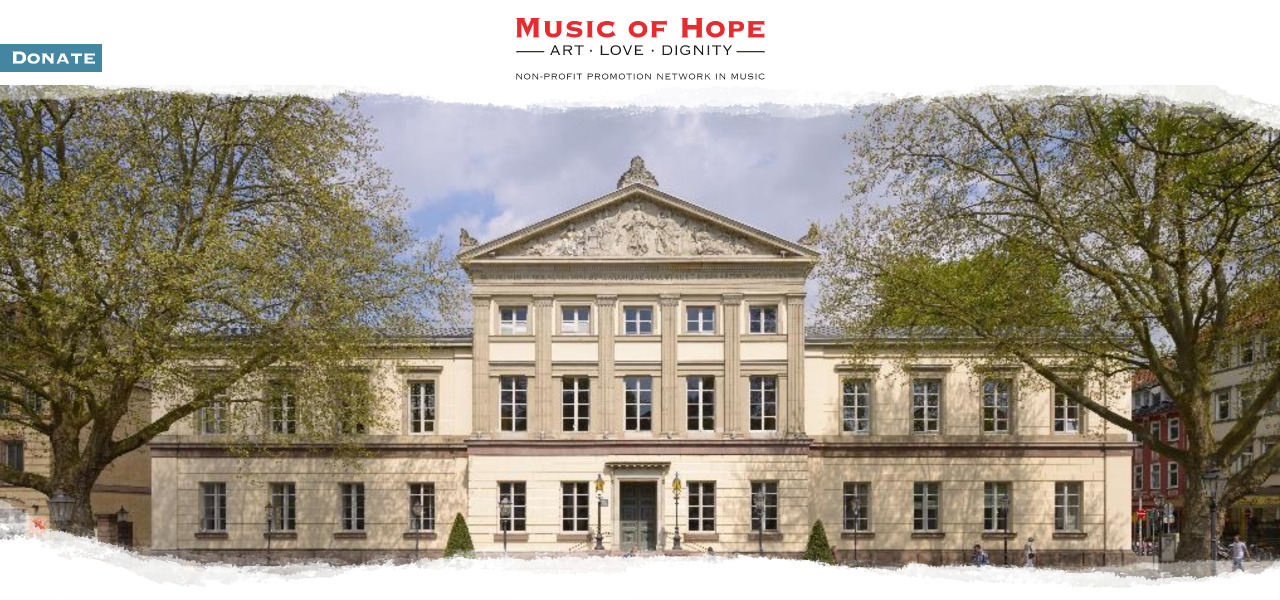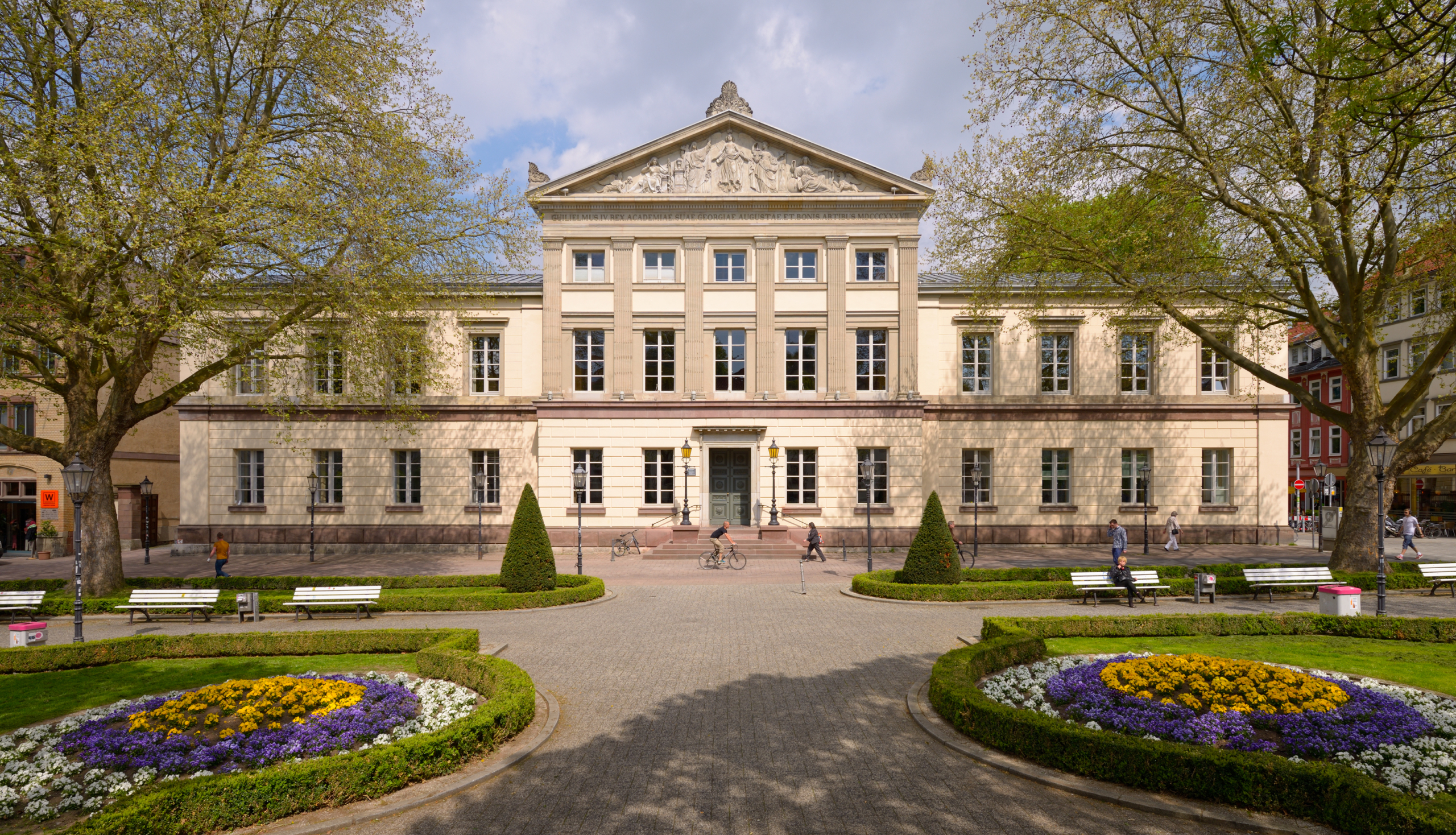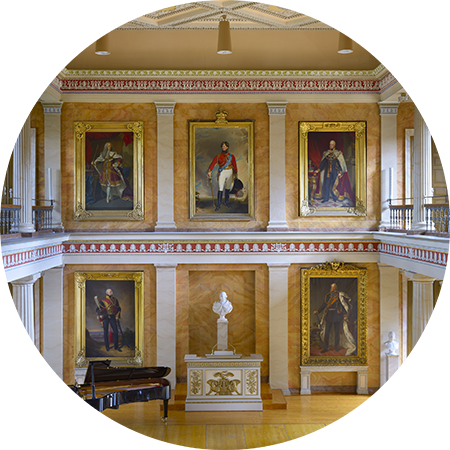Architectural history
The assembly hall on today’s Wilhelmsplatz in Göttingen is one of the most important university buildings built between the first wave of construction after the university was founded in the 18th century and the extensions by the Prussian Cultural Administration after the annexation of Hanover by Prussia in 1866. The Aula building, designed by university architect Otto Praël (1793 to 1862), was inaugurated in 1837 to mark the centenary of the Georgia Augusta. King William IV of Great Britain and Hanover had donated the building, thus fulfilling the university’s wish for a representative building for ceremonial occasions. The late classicist façade features a rich architectural sculpture in natural stone created by the sculptor Ernst von Bandel, who worked at the Hanoverian court at the time with Laves. He also created the statue of King Wilhelm IV on the opposite side of the Wilhelmsplatz, the most important square in the center of the old university.
Even today, the Aula, which seats over 500 people, is primarily used for internal university events.










